Navigational officer, Kyle MacLeod talks about why he loves his life at sea and how he builds on his competencies and skills, both onboard ship and ashore What interested you in building a career at sea? When I decided to go to sea, I knew I wanted to be a deck officer; there was never…
Plan ahead: navigating your way to greater competency
You are a young, junior officer. You have been trained and have received a Certificate of Competency. A You join a ship and are given A responsibility for your own A navigational watch. Are you ready? Do you know everything you need to know? I If not, how do you go about learning, now you aren’t…
Seafarers “happy with life at sea”
PRELIMINARY results from a new survey being carried out as part of the BIMCO/Intemational Chamber of Shipping (ICS) Manpower Report 2015 suggest that most seafarers are content with life at sea. BIMCO is directly engaging seafarers in order to understand their views on life at sea and the outlook for the industry’s manpower in the…
NAVAL ACADEMY «N. J. VAPTSAROV» HAS BEEN A NATIONAL LEADER OF THE BULGARIAN MARITIME EDUCATION FOR 135 YEARS
During its 135 years long history, the Naval Academy “N. Y. Vaptsarov”, proved itself as an undoubted leader of the Bulgarian maritime education. The Academy is approved by the International Maritime Organization of the United Nations Organization— London. Many difficulties and successes have been filling the long way of the establishment and the development of…
FIRST SOLO CIRCUMNAVIGATION OF THE GLOBE part 2
Family at sea Shortly before Christmas 1870, Slocum and the Washington put in at Sydney, Australia. There, in about a month’s time, he met, courted, and married a young woman named Virginia Albertina Walker. Their marriage took place on 31 January 1871. Miss Walker, quite coincidentally, was an American whose New York family had migrated…
FIRST SOLO CIRCUMNAVIGATION OF THE GLOBE part 1
Joshua Slocum (February 20, 1844 – on or shortly after November 14, 1909) was the first man to sail single-handedly around the world. He was a Nova Scotian born,naturalised American seaman and adventurer, and a noted writer. In 1900 he wrote a book about his journey Sailing Alone Around the World, which became an international…
WHALING IN THE SERVICE OF ARCTIC SCIENCE
MANY TOOK ADVANTAGE OF THE RICHES OF THE ARCTIC AREA BEFORE THE COMING OF THE RICHES OF THE ARCTIC AREA BEFORE THE COMING OF THE VOYAGES OF EXPLORATION. SEAL AND WALRUS HUNTERS HAD PROBABLY DISCOVERED THE FURTHEST CORNERS OF THE WHITE SEA BEFORE OTTAR. COD FISHERMEN KNEW ABOUT MANY AREAS BEFORE CARTIER, FROBISHER, DAVIS OR…
THE FIRST FLEET part 3
In February 1790 the “Syrius” – Sirius was ordered to proceed to China to purchase further supplies. This was delayed as, with the “Supply”, she was needed to take more convicts to Norfolk Island, in an endeavour to reduce the strain on the dwindling supplies in Sydney. On 19 March the “Syrius” was wrecked off…
THE FIRST FLEET part 2
The First Fleet left England on 13th May 1787 for the ‘lands beyond the seas’ – Australia, stopping at Tenerife, Rio de Janeiro and Cape Town, where food supplies were replenished. The fleet arrived at Botany Bay between 18th and 20th January 1788. However, this area was deemed to be unsuitable for settlement so they…
THE FIRST FLEET part 1
THE FOUNDERS OF A NATION AUSTRALIA’S FIRST FLEET – 1788 Between 1788 and 1850 the English sent over 162,000 convicts to Australia in 806 ships. The first eleven of these ships are today known as the First Fleet and contained the convicts and marines that are now acknowledged as the Founders of Australia. This is…
STELLER – THE EXPEDITION’S ONLY EXPLORER OF CONSEQUENCE part 2
When writing De Bestiis Marinis, Steller described the sea creatures of Bering Island. Of particular merit is his description of the seals, which could not be faulted later. The sea cow or dugong was an important animal for hunting but it was also one of Steller’s most interesting discoveries. The Steller sea cow was only…
STELLER – THE EXPEDITION’S ONLY EXPLORER OF CONSEQUENCE part 1
Bering’s second voyage was not much better than his first. During this voyage America was probably discovered for the first time from the direction of Asia. The expedition’s greatest achievements were, however, due to Georg Steller. Steller managed to go to Kayak Island by forcing Bering to grant him permission to explore the island while…
